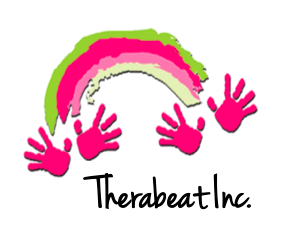While music therapy is considered to be an allied health profession, it is also a creative art therapy as well. Other creative art therapies include dance-movement therapy, drama therapy, and art therapy. Music therapy and art therapy often coincide, especially when helping those individuals who have endured some type of trauma (Payne II et. al, 2018, para. 1). Common benefits to music and art therapy include stress management, improving communication, increasing expression, and aiding physical rehabilitation (Payne II et. al, 2018, para. 2).
This article review seeks to highlight the importance of creative art therapies, specifically music therapy and art therapy. While In-Harmony does not provide art therapy, crafting incorporates many of the motor skills and cognitive skills addressed in other therapies such as OT, PT, ST, and MT. For this reason, a crafting section has been incorporated in each day’s activities during Therabeat’s Virtual Summer Camp. More information about online summer camp and material kits can be found HERE.
Giles et. al’s 1991 study of the role of music and art programs in school examined the effects on how music and art could help the emotional health of elementary school children. The subjects were 255 first and second grade students from northern Virginia schools (Giles, 1991, pg. 138). There were 11 classes from 5 schools. At the beginning of the day, children would select either a happy face or sad face to color (baseline emotion). After recess–when researchers believed students would be at their peak energetic or agitated state– the students would come into their homeroom and then listen to 3 excerpts (classical, Walt Disney soundtrack, and new age) totaling 5 minutes (Giles, 1991, pg. 138&139). After the listening, students would select a new happy or sad face to color. This process continued for 11 days, with 9 days of treatment and 2 days of no treatment (control). Art therapists were consulted to analyze the drawings for signs of distress, anxiety, anger, aggression, and depression.
A significant difference was found between the before/after of the treatment each day. Additionally, art therapists discovered through the baseline happy/sad data that 44 children were sad at least 8/11 times in the beginning, which equates to roughly 73% of the time (Giles et. al, 1991, pg. 139). They considered this to be excessive and alarming. Coincidentally, these children were less responsive to the music treatment. The researchers remarked that these children “may require more positive reinforcement more often and for longer periods of time” to help alter mood (Giles et. al, 1991, pg. 146).
The researchers concluded the following from their study (Giles et. al, 1991, pg. 147):
Children who may be at risk for emotional or behavioral disorder may need more exposure to such a program of music and art for longer periods of time, since the study showed that they were more resistant to mood change….It is incumbent upon the schools to find models to help children cope with their stresses, build self-esteem, and foster emotional health.
The researchers also note that both music and art are “trusted allies” to children (Giles et. al, 1991, pg. 147), allowing therapeutic relationships to exist more organically. Giles et. al also mention that both activities are frequently woven into day-to-day schedules for primary school children, yet many states and districts undergo yearly budget cuts that often lead to the discontinuing of fine arts and performing arts. During a time when childhood depression and anxiety is increasing, providing as many positive creative outlets as possible to children is essential.
References:
Giles, M. M., Cogan, D., & Cox, C. (1991). A Music and Art Program to Promote Emotional Health in Elementary School Children. Journal of Music Therapy, 28(3), 135-148.







